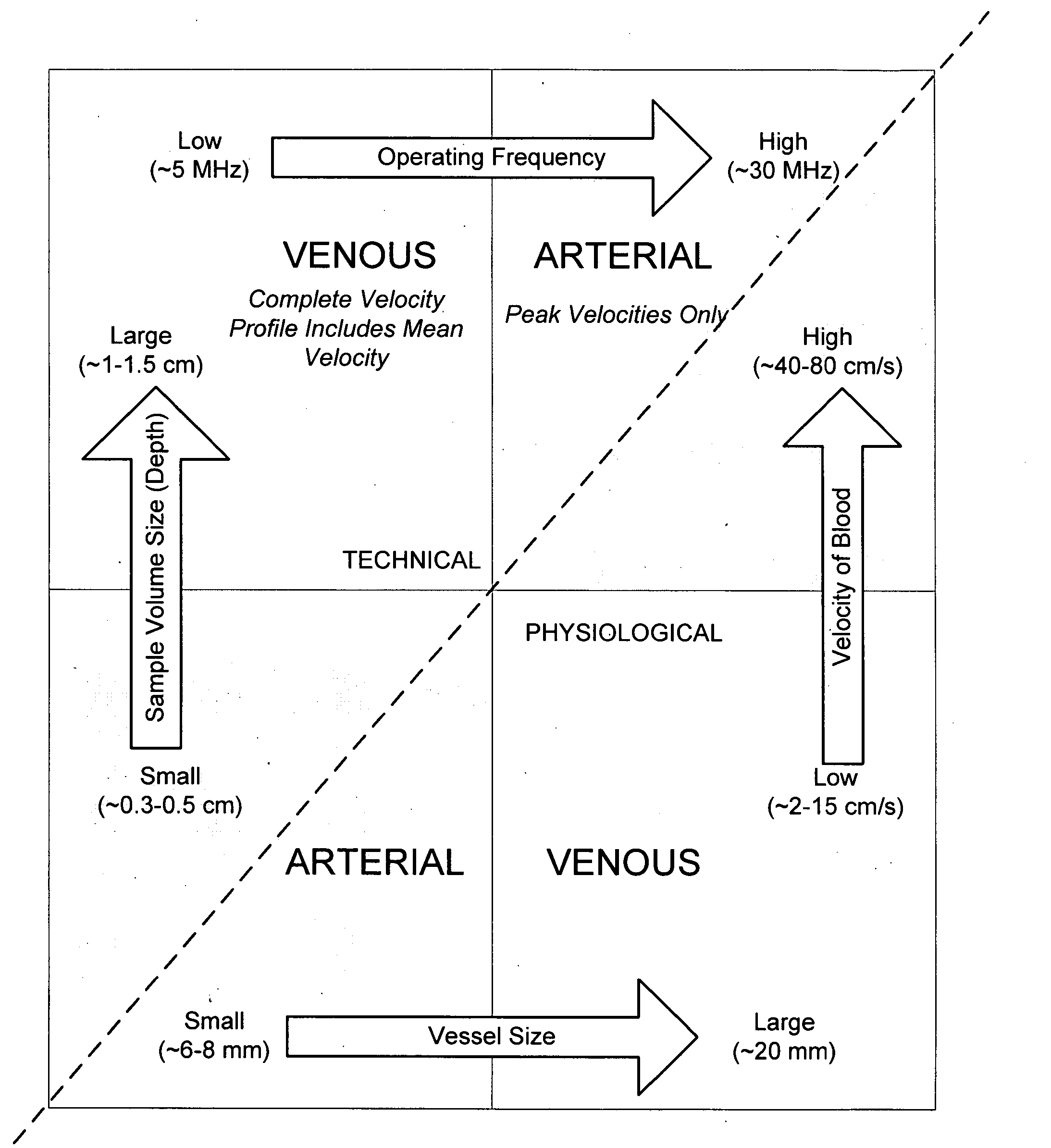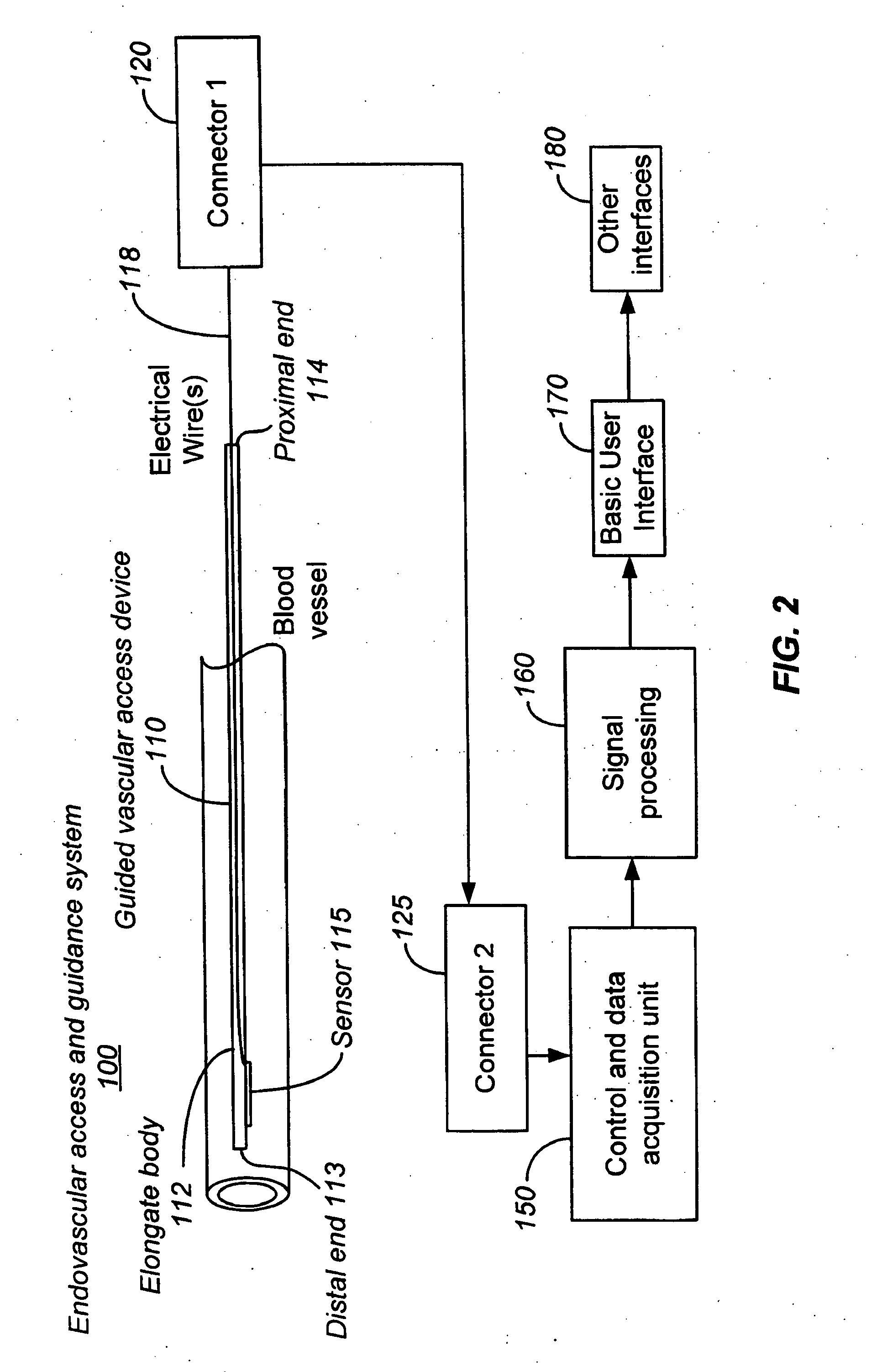Ultrasound methods of positioning guided vascular access devices in the venous system
a technology of vascular access devices and ultrasonic waves, applied in the direction of angiography, catheters, applications, etc., can solve the problems of perforation of the heart and reduced effectiveness
- Summary
- Abstract
- Description
- Claims
- Application Information
AI Technical Summary
Benefits of technology
Problems solved by technology
Method used
Image
Examples
Embodiment Construction
[0078] Embodiments of the present invention provide guided vascular access devices, systems for processing signals from the guided vascular access devices and user interface for providing information to a user based on outputs from the processing system. Other aspects of embodiments the invention relate to the use of intravascularly measured physiological parameters for locating, guiding, and placing catheters in the vasculature (see FIG. 1). In one aspect, the present invention relates to a catheter assembly with built-in sensors for measuring of physiological parameters such as blood flow, velocity, or pressure. In a different aspect, the present invention relates to data processing algorithms that can identify and recognize different locations in the vasculature based on the pattern of physiological parameters measured at that location. In a third aspect, the present invention relates to an instrument that has a user interface which shows guiding and positioning information. The ...
PUM
 Login to View More
Login to View More Abstract
Description
Claims
Application Information
 Login to View More
Login to View More - R&D
- Intellectual Property
- Life Sciences
- Materials
- Tech Scout
- Unparalleled Data Quality
- Higher Quality Content
- 60% Fewer Hallucinations
Browse by: Latest US Patents, China's latest patents, Technical Efficacy Thesaurus, Application Domain, Technology Topic, Popular Technical Reports.
© 2025 PatSnap. All rights reserved.Legal|Privacy policy|Modern Slavery Act Transparency Statement|Sitemap|About US| Contact US: help@patsnap.com



